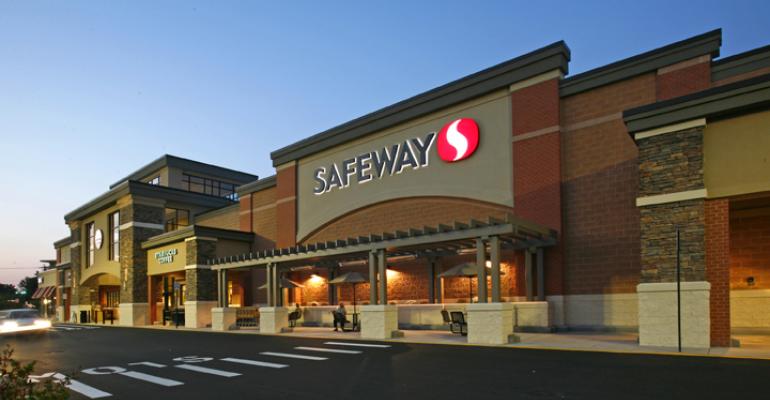Although grocery-anchored centers will continue to attract investor interest in 2015, the appetite for urban retail is growing. Additionally, experts expect investors to continue to broaden their horizons beyond primary markets to secondary markets.
“Grocery-anchored centers have been the preferred asset within the retail sector for the past several years,” notes Jim Costello, senior vice president for New York City–based Real Capital Analytics. “They’re the go-to investment because everybody needs to eat, regardless of the economy, and they will continue to attract investors. There’s another investment story, though, and it involves urban storefront retail.”
Retail sector heats up
Investment sales volume in the retail sector increased 30.3 percent in 2014, reaching nearly $83 billion, according to Real Capital Analytics. That’s on top of a 10.4 percent increase in 2013.
Kris Cooper, managing director of retail capital markets at JLL, says investor interest in the retail sector is increasing, though it’s not as hot as the multifamily or office sectors. “It was one of the hardest hit asset classes in the recession,” he points out. “It’s simply taking retail a lot longer to fully recover, but we are bullish on retail’s prospects for 2015.”
Cooper expects investment sales volume to increase this year, though he admits it’s too early in the year to know for sure. “There is so much pent up demand for class-A retail product that it should loosen up in 2015 as sellers take advantage of really low cap rates and high prices,” he says. “If interest rates rise, it will dampen volume, but I don't anticipate rates to rise all that much.”
Urban retail sizzles
Roughly $12.8 billion worth of grocery-anchored centers changed hands in 2014, a 34.6 percent increase over 2013, according to Real Capital Analytics. In suburban Phoenix, for example, Weingarten Realty acquired Scottsdale Horizon for $43.8 million. The 155,000-sq.-ft. center is anchored by Safeway and CVS Pharmacy and 94 percent leased.
“Investors are looking for stable assets in markets where they will receive significant rent growth,” says Margaret Caldwell, managing director at JLL. “They have remained consistent with the retail assets they are targeting—the only change is increased investor interest in secondary markets due to lack of supply in primary markets which has resulted in a pricing increase for grocery anchored and power centers.”
Investment activity in urban retail last year outpaced grocery-anchored centers. In 2014, Real Capital Analytics tracked urban retail deals totaling $13.1 billion. That represents an increase of 60.3 percent compared to 2013.
“The interest in urban retail, particularly storefront retail, is driven by the Millennials and their preference for live-work-play environments,” Costello says, adding that investors are getting more comfortable with urban deals. “It’s getting easier for folks to wrap their heads around urban retail and buying partial interests in buildings that might have mixed-use components.”
The biggest urban retail deal to close in 2014 occurred on Chicago’s Magnificent Mile. Acadia Realty Trust paid $144.3 million for a stake in 840 N. Michigan Avenue, a four-level, 87,136-sq.-ft. retail property located across the street from the city’s iconic Water Tower Place. 840 N. Michigan Avenue is fully leased to Swedish clothier H&M and a Verizon Destination flagship store.
“Given retailing’s continued evolution, urban/street retail’s more robust growth profile, and the relative pricing of alternative investments, we remain active acquirers of these types of high-barrier-to-entry, irreplaceable assets,” Acadia’s President and CEO Kenneth Bernstein said in a press release.
Another significant urban deal occurred in Seattle’s Capitol Hill neighborhood. Regency Centers Corp. and an investment partner acquired Broadway Market for $43 million. The mixed-use property consists of 110,000 square feet of retail, as well as 30 residential units and 230 stalls of subterranean parking. The center is anchored by Quality Food Centers (a Kroger brand), Urban Outfitters and Gold’s Gym.
“This is a tremendous addition to our Pacific Northwest platform, as we continue to grow our business through development, redevelopment, and acquisitions of highly productive urban and suburban grocery-anchored and mixed-use properties,” said Craig Ramey, senior vice president and senior market officer for Regency Centers in a press release.
Under-allocated to retail
Public REITs like Acadia, Regency Centers and Weingarten were among the most active buyers in 2014. While industry experts expect these investors to continue to expand their retail portfolios, they also anticipate increased appetites from other institutional investors.
“Institutional investors should increase their allocations for core retail to help diversify their portfolios,” Cooper advises. “Quite frankly, a lot of investors are under-allocated in retail now, especially those weighted too heavily in office. While under-allocated, we’d still advise that quality, core product, which will be a safe investment in the short and long-term, remain their target for acquisitions.”

